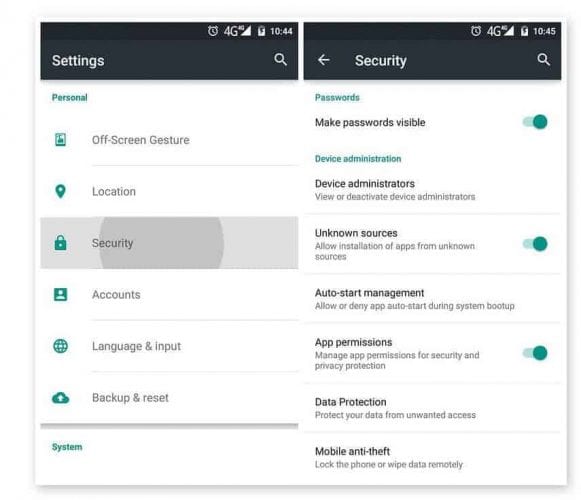Social engineering is a nontechnical method of breaking into a system or network. It's the process of deceiving users of a system and convincing them to perform acts useful to the hacker, such as giving out information that can be used to defeat or bypass security mechanisms. Social engineering is important to understand because hackers can use it to attack the human element of a system and circumvent technical security measures. This method can be used to gather information before or during an attack.
A social engineer commonly uses the telephone or Internet to trick people into revealing sensitive information or to get them to do something that is against the security policies of the organization. By this method, social engineers exploit the natural tendency of a person to trust their word, rather than exploiting computer security holes. It's generally agreed that users are the weak link in security; this principle is what makes social engineering possible.
The most dangerous part of social engineering is that companies with authentication processes, firewalls, virtual private networks, and network monitoring software are still wide open to attacks, because social engineering doesn't assault the security measures directly. Instead, a social-engineering attack bypasses the security measures and goes after the human element in an organization.
Types of Social Engineering-Attacks
There are two types of Social Engineering attacks
Human-Based
Human-based social engineering refers to person-to-person interaction to retrieve the desired information. An example is calling the help desk and trying to find out a password.
Computer-Based
Computer-based social engineering refers to having computer software that attempts to retrieve the desired information. An example is sending a user an email and asking them to reenter a password in a web page to confirm it. This social-engineering attack is also known as phishing.
Human-Based Social Engineering
Human-Based further categorized as follow:
Impersonating an Employee or Valid User
In this type of social-engineering attack, the hacker pretends to be an employee or valid user on the system. A hacker can gain physical access by pretending to be a janitor, employee, or contractor. Once inside the facility, the hacker gathers information from trashcans, desktops, or computer systems.
Posing as an Important User
In this type of attack, the hacker pretends to be an important user such as an executive or high-level manager who needs immediate assistance to gain access to a computer system or files. The hacker uses intimidation so that a lower-level employee such as a help desk worker will assist them in gaining access to the system. Most low-level employees won't question someone who appears to be in a position of authority.
Using a Third Person
Using the third-person approach, a hacker pretends to have permission from an authorized source to use a system. This attack is especially effective if the supposed authorized source is on vacation or can't be contacted for verification.
Calling Technical Support
Calling tech support for assistance is a classic social-engineering technique. Help desk and technical support personnel are trained to help users, which makes them good prey for social-engineering attacks.
Shoulder Surfing
Shoulder surfing is a technique of gathering passwords by watching over a person's shoulder while they log in to the system. A hacker can watch a valid user log in and then use that password to gain access to the system.
Dumpster Diving
Dumpster diving involves looking in the trash for information written on pieces of paper or computer printouts. The hacker can often find passwords, filenames, or other pieces of confidential information.
Computer-Based Social Engineering
Computer-based social-engineering attacks can include the following:
- Email attachments
- Fake websites
- Pop-up windows
Insider Attacks
If a hacker can't find any other way to hack an organization, the next best option is to infiltrate the organization by getting hired as an employee or finding a disgruntled employee to assist in the attack. Insider attacks can be powerful because employees have physical access and are able to move freely about the organization. An example might be someone posing as a delivery person by wearing a uniform and gaining access to a delivery room or loading dock. Another possibility is someone posing as a member of the cleaning crew who has access to the inside of the building and is usually able to move about the offices. As a last resort, a hacker might bribe or otherwise coerce an employee to participate in the attack by providing information such as passwords.
Identity Theft
A hacker can pose as an employee or steal the employee's identity to perpetrate an attack. Information gathered in dumpster diving or shoulder surfing in combination with creating fake ID badges can gain the hacker entry into an organization. Creating a persona that can enter the building unchallenged is the goal of identity theft.
Phishing Attacks
Phishing involves sending an email, usually posing as a bank, credit card company, or other financial organization. The email requests that the recipient confirm banking information or reset passwords or PINs. The user clicks the link in the email and is redirected to a fake website. The hacker is then able to capture this information and use it for financial gain or to perpetrate other attacks. Emails that claim the senders have a great amount of money but need your help getting it out of the country are examples of phishing attacks. These attacks prey on the common person and are aimed at getting them to provide bank account access codes or other confidential information to the hacker.
Online Scams
Some websites that make free offers or other special deals can lure a victim to enter a username and password that may be the same as those they use to access their work system.
The hacker can use this valid username and password once the user enters the information in the website form. Mail attachments can be used to send malicious code to a victim's system, which could automatically execute something like a software keylogger to capture passwords. Viruses, Trojans, and worms can be included in cleverly crafted emails to entice a victim to open the attachment. Mail attachments are considered a computer-based social-engineering attack.
Related news





















